
New Year, New Garden - Part IV: Site Preparation

Over the last few weeks, we have been chronicling how to create a new garden at home. We’re now at the point where we’re going to get our hands dirty – site prep! Before we begin, the result of this step is going to leave you with some bare, albeit pretty primo soil, exposed in your yard. If you live in an area with a homeowner’s association (HOA), or just don’t want to leave a large area of exposed soil prominently in your yard for any length of time, you may want to table this step until you have your plants on hand. If the bare ground doesn’t bother you or your neighbors, you can start your prep at any time, just don’t wait too long before planting, or weeds may move in and take advantage of some new, prime real estate!
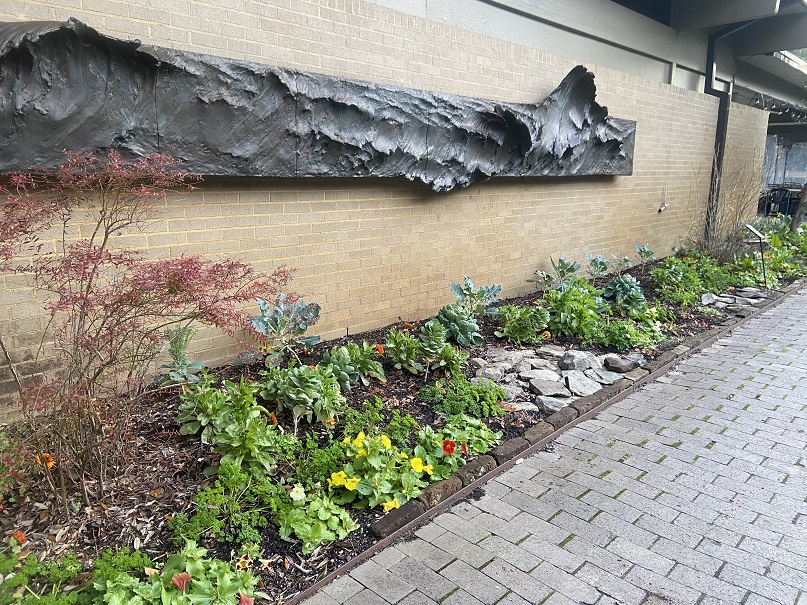 Cool-season planting outside of Harvest Restaurant in January 2022
Cool-season planting outside of Harvest Restaurant in January 2022
While it’s tempting to immediately plant in the ground, a little preparation is likely in order. Depending on what you are growing and what your garden site is like, you may be fortunate to proceed as-is, but most of us are probably not so lucky. Before we bring plants into the landscaping picture, let’s get our site ready by preparing our bed and soil.
If your future garden site is in an existing lawn, your bed will benefit from removing the turf first. Depending on your budget and how big your upcoming bed area is, you may want to consider renting a sod cutter to help remove the existing turf. If the turf is of good quality, you can even reuse it around your yard where areas are bare. If you’re not interested in using larger equipment, a shovel will do just fine. This job is often made easier by cutting the turf into smaller, square patches and digging them up as “tiles.” This will make it easier to move them, and hopefully spare your back the pain of moving something too heavy! And yes, you can still use these “tiles” as replacement turf throughout your yard too!
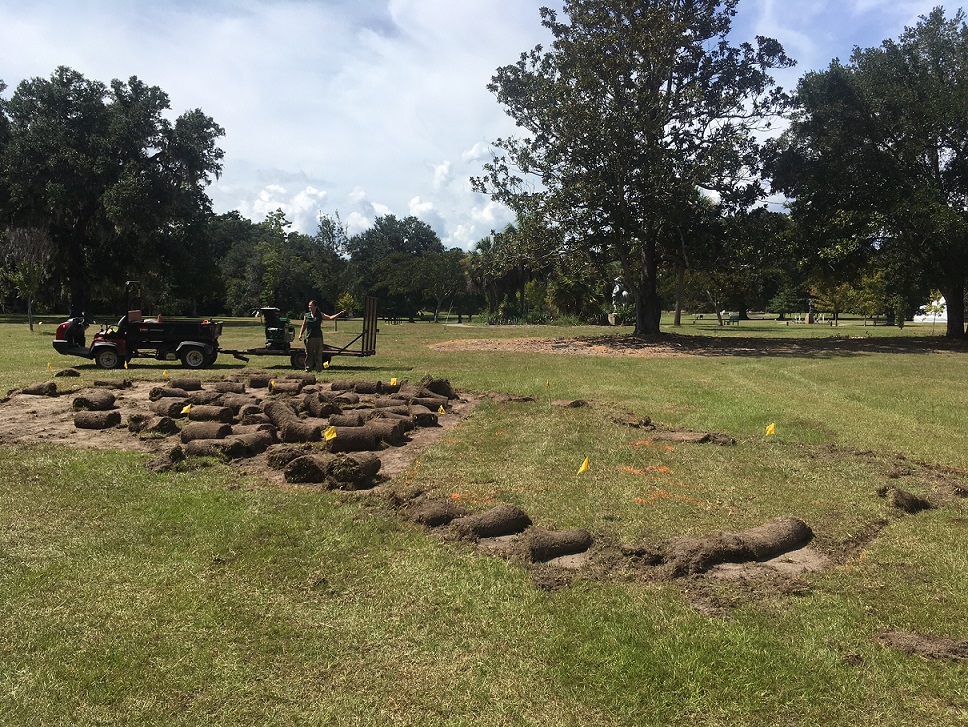 Turf removal for a new conifer bed created in 2018
Turf removal for a new conifer bed created in 2018
Once you have your area free of turf, you will likely want to amend your soil. A soil test can be sent to your local extension (ours is Clemson Extension and you can find info for their soil tests here to tell you more about your soil and receive their recommendations for what to add.) While a soil test isn’t necessary, it doesn’t hurt to learn about what kind of soil you have and will only help to make your plantings more successful. If you decide to send a soil sample to your extension, wait until you receive the results to know exactly how to prepare your soil. You may find your soil needs more or less of a certain nutrient and may want to incorporate that as well.
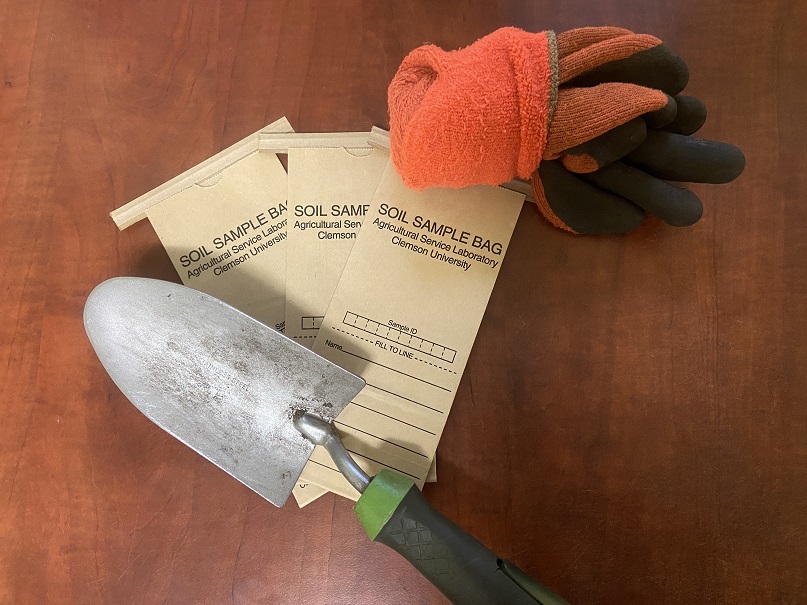 Soil sample bags, a trowel, and gardening gloves
Soil sample bags, a trowel, and gardening gloves
At Brookgreen Gardens, we typically incorporate compost into new planting beds to add nutrients and richen the soil. Adding compost is easy! Simply put compost on top of your bare soil and use a shovel to work it in, mixing it with your existing soil. To use a baking reference, it’s almost as if you are folding the compost into the soil, and the shovel is your rubber spatula.
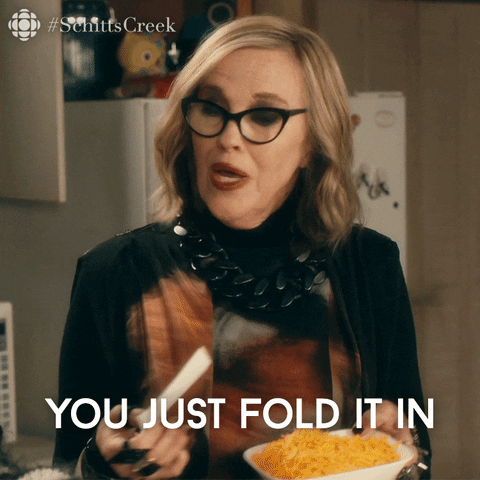
You may find that your soil stays wet or that if you dig down much below a foot, you find sticky wet clay. In these instances, consider planting a little higher. This simply means building the bed up above the ground. You can purchase topsoil to help bring in more height and looser soil to make your bed. You will want to grade your bed so it does not wind up looking like a giant, menacing fire ant hill in the middle of your yard, but instead like a gentle, gradual incline. Many plants prefer to have well-drained soil, but you may find your plant selections are clay tolerant or do well in more water. In that case, you can plant at a normal, ground-level depth.
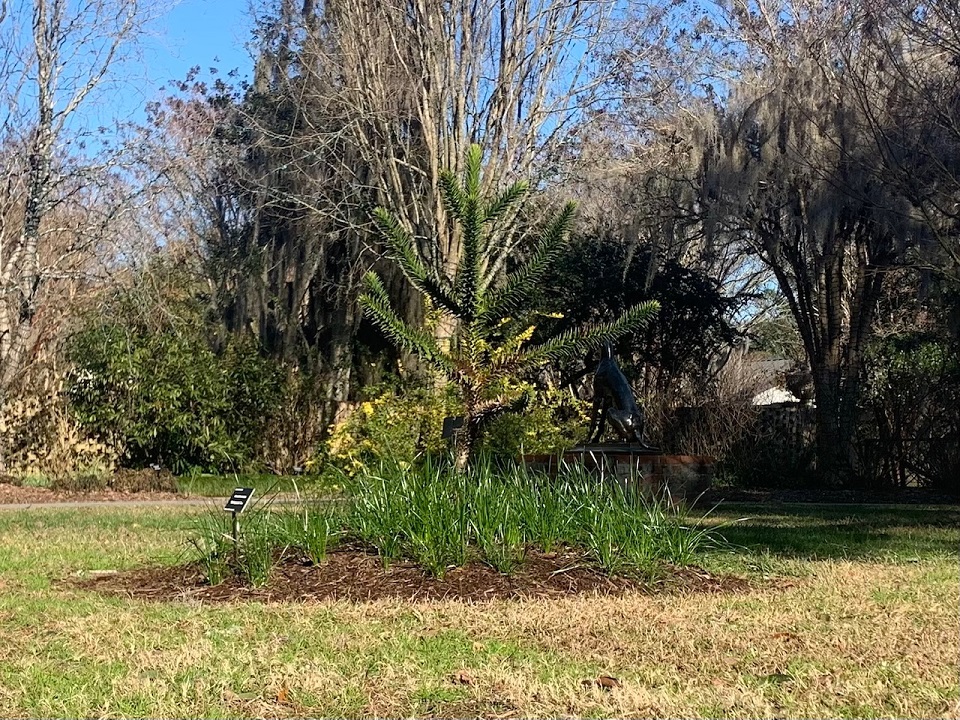 A monkey-puzzle tree (Araucaria araucana) planted on a gradual incline
A monkey-puzzle tree (Araucaria araucana) planted on a gradual incline
Once your site is prepared, you are ready to plant! Depending on what plants you have in mind, winter can be an excellent time to get things like trees and shrubs into the ground. If you live in an area where the ground freezes, you will want to wait until the spring when it thaws before incorporating plants into your landscape. Fortunately for us, in our area, we seldom have winters where the ground freezes, which makes gardening here even better!
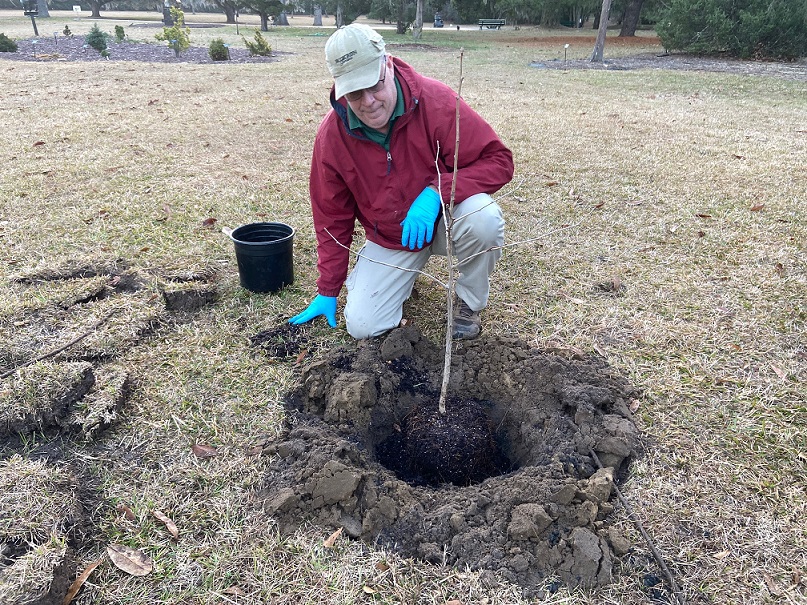 Planting a maidenhair tree (Ginkgo biloba) in the winter
Planting a maidenhair tree (Ginkgo biloba) in the winter
Before you jump right into prepping your new garden, decide first if you want to submit a soil sample, and if you want to have your plants on hand once the preparation is complete. This will help to dictate your timeline and when you should start making physical changes to your landscape. Be sure to check back next week for our fifth and final installment of New Year, New Garden – Planting and Maintaining.
See you in the Gardens!
Hours
Hours: Monday & Tuesday 9:30 AM - 5:00 PM
Wednesday - Sunday 4:00 PM - 9:00 PM
For daytime admission, gates close at 4:30 PM. For their safety and the safety of our animal collection, pets are not allowed, nor can they be left in vehicles inside Brookgreen. Service animals that have received special training to assist disabled persons are welcome.
Tickets
Daily General Admission Tickets for 7 consecutive days
Children 3 and under: Free
Children 4-12: $14
Adults 13-64: $25
Seniors 65 & Over: $23
Location
1931 Brookgreen Drive
Murrells Inlet, SC 29576
Off US Highway 17 Bypass, between Murrells Inlet and Pawleys Island on South Carolina's Hammock Coast
843-235-6000
GOOGLE DIRECTIONS